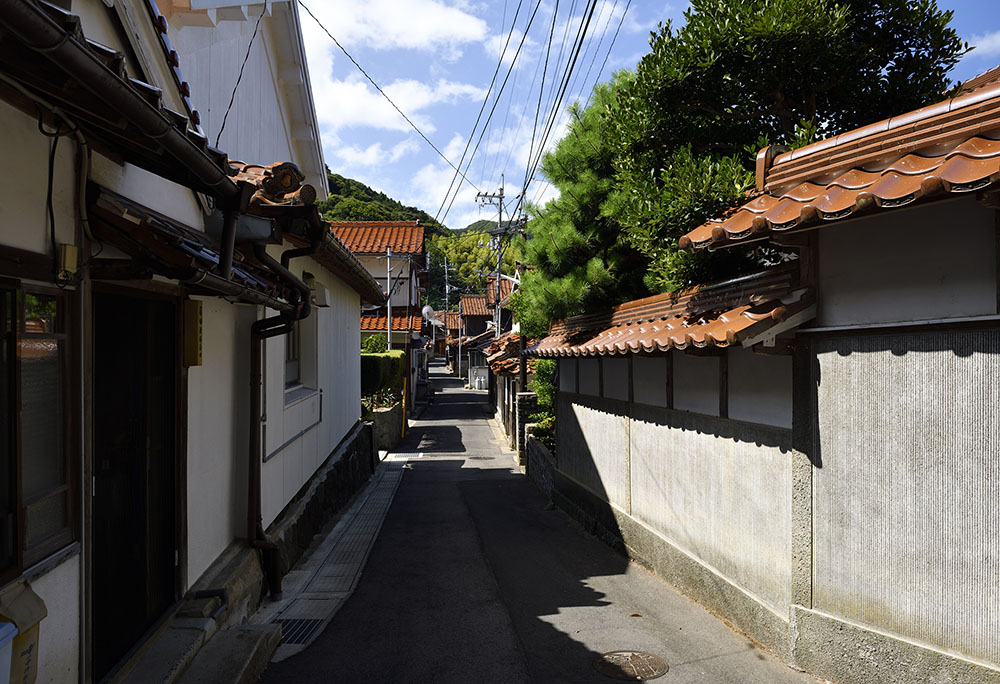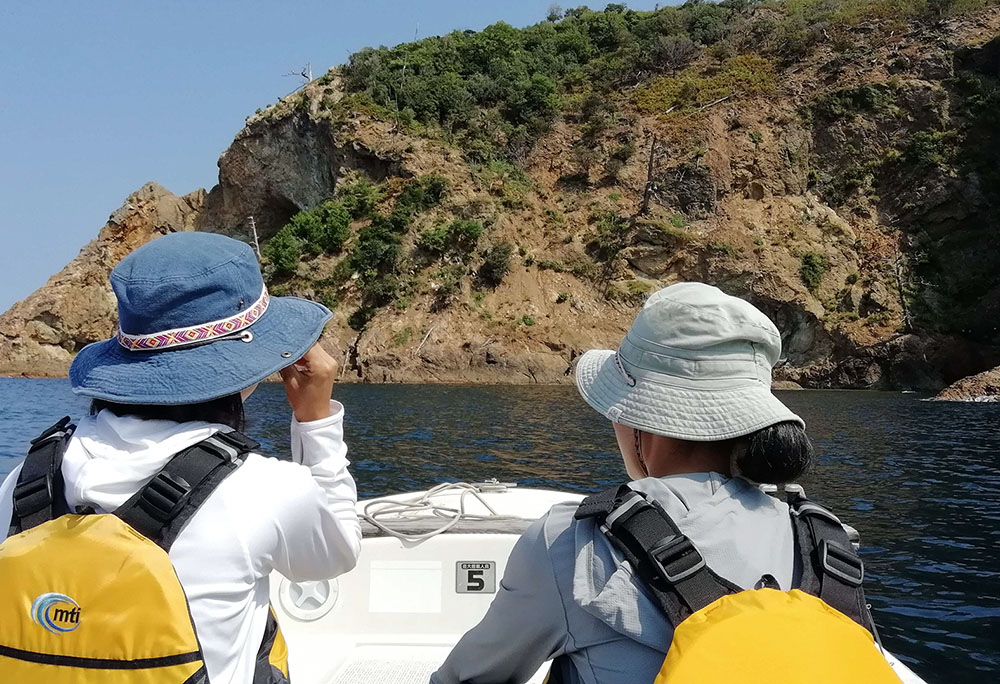
Facing the mountains north of Izumo Oyashiro (Izumo Grand Shrine), Sagiura is home to Inasehagi Shrine, an auxiliary shrine of the Izumo Grand Shrine, constructed in the same ancient architectural style. The Izumo Grand Shrine is periodically rebuilt, and the old wood is then used to refurbish Inasehagi Shrine. The deity enshrined here is Inasehagi no Mikoto. According to Japan’s oldest chronicles, when the goddess Amaterasu Omikami’s messengers were trying to convince the god Okuninushi no Okami to pass control of the land to her descendants in a peaceful manner, Inasehagi no Mikoto ran to Miho Shrine to confer with Okuninushi no Okami’s son, Kotoshironushi no Kami. As a result of his efforts, the father and son agreed to transfer control, and bloodshed was avoided.
Visitors can follow a path leading to a cemetery near the large tunnel of Sagiura that affords a view of the town with its red sekishu tiled roofs. These strong tiles, characteristic of architecture in central Shimane, invoke the prosperity of a time when trade flourished along the Sea of Japan. There are still inns in town that look much the same as they did in the Edo period (1603–1867), when sailors and merchants stayed here while their trading ships were anchored at Sagiura port. The coast itself is home to captivating caves, islets, and rock formations. Visitors are encouraged to get on a boat to see the coastal scenery up close, especially if the weather is nice and the boat can enter the Mikazuki Bay Cave (Mikazuki-wan-do). Light filters through a hole in the top of the cave, which is shaped like a crescent moon (mikazuki), turning the water a brilliant emerald hue and creating a truly unforgettable scene.






